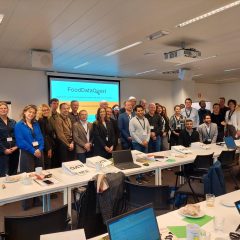Research project Detection and quantification of allergens in foods and minimum eliciting doses in food allergic individuals

General introduction
According to European consumer protection legislation, 14 food ingredients that can possibly cause allergic reactions must be listed on food product packaging. Compliance with and enforcement of this legislation is complicated by several problems with the detection of allergens (impact food processing, variability and inaccuracy of existing methods, lack of analytical standards, …) and the lack of scientifically substantiated threshold levels. This project has developed a reference method for the detection and quantification of allergens and generated scientifically substantiated data which allow the determination of threshold levels.
Research approach
At the Food Pilot within ILVO, several food products containing different concentrations of diverse allergens were produced. We used these products and other already available materials to develop and validate a quantitative LC-MS/MS method. We drew on the knowledge and expertise of the different project partners regarding detection of food allergens with LC-MS/MS. For the second objective of the project, data concerning “oral food challenges” from previous projects was merged into a publicly accessible database. From this database threshold values can be determined. Furthermore, consensus protocols were drafted to support future harmonization of data collection.
Relevance/Valorization
All results of the project (LC-MS/MS method, consensus protocols, database oral food challenge tests) were transferred to the European Food Safety Agency (EFSA). Further dissemination of the new analytical strategy and consensus protocols was obtained through publication in peer-reviewed journals and communication with clinical and industrial stakeholders.









